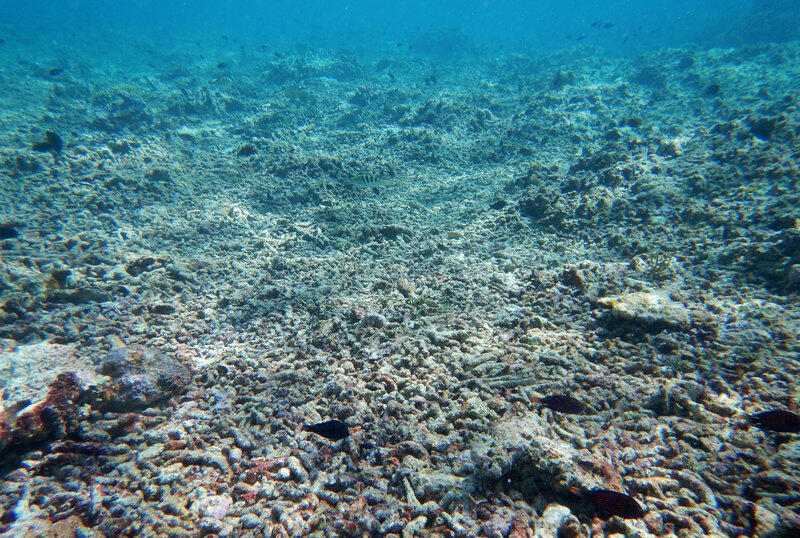Just over a month ago, the Permanent Court of Arbitration in The Hague issued two important rulings. One soundly rejected Beijing’s extensive claim of sovereignty in the South China Sea. The other focused on whether China had caused environmental damage as it constructed artificial islands in the region to help prop up its claim.
The South China Sea’s disputed waters are claimed by seven countries, and The Hague rulings came in response to a case brought against China by the Philippines. China dismissed The Hague’s decision as “nothing but a scrap of paper.”
But Kent Carpenter, a professor of biological science at Old Dominion University and an expert witness for the tribunal, says The Hague tribunal’s findings were nothing short of damning.
“The tribunal clearly decided that China had caused severe harm to the coral reef environment,” he says. China also violated its obligations under the United Nations Convention on the Law of the Sea “to preserve and protect fragile eco-systems,” he says.
The tribunal found that damage to the coral reefs in the Spratly Islands is extensive, spreading for more than 30 square miles. Much of that damage is caused by China’s island-building — turning pristine reefs into permanent military outposts that include massive runways.
John McManus, a professor of marine ecology at the University of Miami, says the Chinese use huge dredgers to pull up sand and anything else in their way.
“They’re using a grinding ball,” he says. “It’s got grooves and teeth and it spins around and tears up living coral and parts of the coral reef substrate, to make more gravel and sand to be sucked up and used for island-building.”
he dredgers also create plumes of sediment, McManus says. When it lands, the sediment smothers coral, fish, whole marine ecosystems. He says this has been devastating to one of the world’s most biodiverse regions.
“We’re talking about some of the highest diversity in the world,” he says. “You may have 70 species of coral, roughly, in the Caribbean, about 70 or so in Hawaii — but here, we’re talking well over 400 species of coral. And it’s the same ratios for fish and invertebrates.”
However destructive the island-building is, it’s nothing compared to the damage done by the poaching of giant clams, says Carpenter. Chinese fishermen have been destroying entire reefs, he says, by using propellers to try to dredge up and harvest the clams, which appear on the IUCN Red List as a “vulnerable” species.
The fishers anchor a boat, rev up the engine and swing the propeller from side to side, he says. “The action of the propeller basically uncovers and breaks up all of the coral, so that the giant clams are basically easy to extract,” he says.
Carpenter says The Hague tribunal found the Chinese government had essentially turned a blind eye to the poaching of giant clams.
The poachers’ actions help China back up its claim that it’s only building artificial islands on dead coral reefs, not living ones, McManus says.
“So in a way,” he says, “China is not lying, they’re telling the truth. They actually built on dead coral — because the Chinese fishers had already killed the coral.”
Beijing has recently started cracking down on the poachers, he says. But Edgardo Gomez, a marine biologist at the University of the Philippines, says it may be too late.
“There are half-a-dozen species of giant clams in the world that are within that area,” he says, “and all of the living clams plus the shells have been virtually wiped out of the South China Sea.” The Philippines tried restocking, but the clams were wiped out again.
China was invited to — but did not — provide evidence to The Hague tribunal to back up its claims that it had done extensive environmental studies before constructing islands in the South China Sea. Carpenter says there’s concern China will continue to build up islands and destroy the environment.
“If it does, then it will begin to lose all of its credibility with regard to its own international obligations,” he says.
Even if China were to abandon the artificial islands, he warns, the environment in the area could take decades — if ever — to recover. Tearing down the islands at this point, he says, isn’t the answer, either, and would cause more damage than has already been done.
Source: NPR











